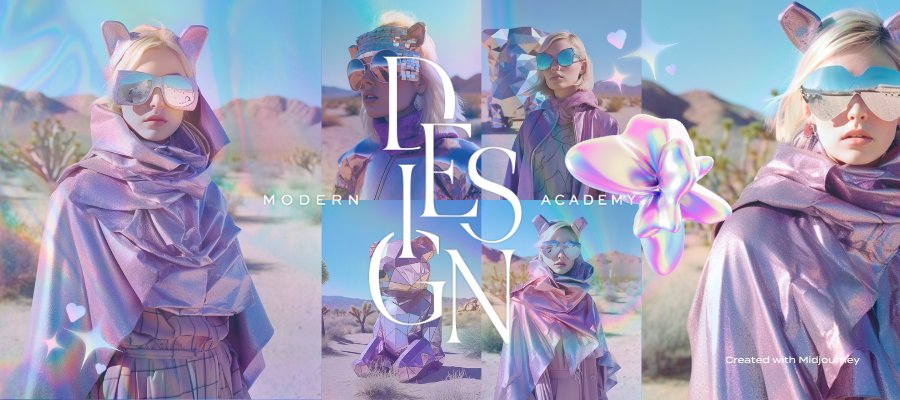
As designers and digital marketers, we have a unique opportunity to embrace the potential of AI while ensuring fair and inclusive design solutions. However, it’s crucial to navigate the ethical implications that arise. We’ll discuss key variables of AI ethics in design and provide useful guidance on how to strike a balance between innovation and responsibility.
Bias in AI Algorithms–The Hidden Dangers

AI algorithms can be our trusty sidekicks, but we need to watch out for their secret identity: biases. Picture this: you’re a fabulous designer creating an ad campaign for a trendy clothing brand. You rely on a cool new AI tool to select models for your ads, but uh-oh! The system trained on a dataset that unintentionally favours thin models, ignoring the diverse and body-positive message you want to convey.
To ensure fairness and inclusivity, designers must kick biases to the curb. It’s time to call on a diverse and representative dataset that showcases models of all shapes, sizes, and backgrounds. By auditing and testing your AI system regularly, you can save the day from perpetuating harmful stereotypes and instead create empowering visuals that celebrate every body. Remember, our designs should be as diverse as the people who inspire them!
Data Privacy Concerns–Safeguarding User Trust

Let’s talk about a crucial dance move in the world of AI-enabled design: safeguarding user privacy. Just like making those moves from your fav TikTok , it’s all about finding the right rhythm between personalization and respecting user boundaries.
Imagine you’re designing for a hot new social media platform that uses AI to curate news feeds based on user preferences. But hold up! If users have no clue about the data being collected or their consent isn’t obtained, trust starts to breakdance away, leaving privacy concerns in its wake.
To rock the privacy game, designers need to take centre stage with transparency and informed consent. It’s time to whip out clear privacy policies, written in a language even your grandma can understand. Give users the superpower of granular control over data sharing, so they feel like the ultimate guardians of their own information. So remember, transparency is key! Show users the benefits of data-driven personalization, like discovering unicorn-inspired content tailored just for them. It’s not just about the moves we make but the trust we build.
Impact of AI on Human Creativity–Collaboration, not Replacement

The rise of AI might have caused a few sleepless nights pondering the fate of our creative genius. But instead of seeing AI as the supervillain aiming to steal our thunder, let’s welcome it as our trusty sidekick for a design adventure like no other.
AI brings its superpowers to the table, helping us generate mind-blowing ideas, zap away mind-numbing repetitive tasks, and skyrocket our productivity. That means more time for what we do best—unleashing our high-level thinking and superhero-level problem-solving skills.
Imagine this: you’re in the midst of a logo design project, and you summon your AI-powered ally. With a few clicks, it generates a plethora of initial concepts, analyzes the perfect colour palettes, and even suggests font combinations that make your design soar to new heights. It’s like having a design wizard on speed dial!
But hey, here’s the best part—we’re still the star of the show. While we don’t want to rely soeley on AI, our unique human perspective and boundless creativity infuse every pixel of the final design. No worries about being replaced by AI, my fellow designers. Clients would need to precisely articulate what they want, and we all know that’s a mission impossible. So, we’re safe, my friends!
Embracing AI Awesomeness: Practical Tips for Responsible Designers
Here are some practical tips that will have you rocking the design world with a dash of ethics and a whole lot of creativity:
Diverse and representative datasets: Spice up your AI algorithms by using datasets that are as diverse as the colors in your design palette. Celebrate different perspectives and demographics, making sure your designs are inclusive and kick biases to the curb. It’s like creating a design party where everyone’s invited!
Continuous testing and auditing: Just like superheroes need regular check-ups, your AI systems need a little TLC too. Keep those capes on and regularly evaluate your AI systems to spot any sneaky biases or unintended consequences. Time to save the day and create designs that are truly fair and unbiased!
Transparent communication: Let’s be honest and open with our users. Communicate clearly about data collection, usage, and privacy practices. By building trust and fostering informed consent, you’ll have your users high-fiving you for keeping their information safe while creating awesome designs.
Ethical guidelines and frameworks: Be the designer who knows their stuff! Familiarize yourself with ethical design frameworks like the Ethical Design Manifesto. These guidelines will be your trusty sidekick, helping you integrate ethical considerations into your design process and ensuring your designs make the world a better place.

Human-centered approach: You’re the hero of design, and AI is your trusty sidekick. So, let’s keep it that way! Make sure your AI technologies enhance human experiences rather than replacing them. Put the user at the center of your design universe and create designs that spark joy and make their lives easier.
Now, armed with these supercharged tips, you’re ready to create designs that not only rock the world but also make it a fairer, more inclusive place. So, go forth, fellow designers, and let your responsible AI practices shine!
Join the launch list for the Modern Design Academy’s new AI Design course coming soon!
CATEGORY
May 1, 2023
POSTED
There are two sides when it comes to integrating artificial intelligence (AI) into the design industry – innovation and responsibility.